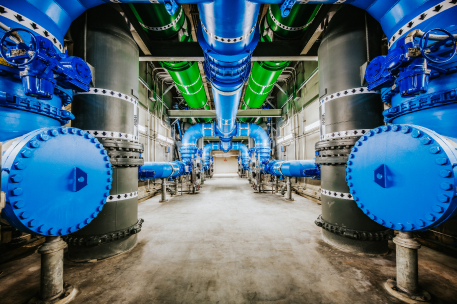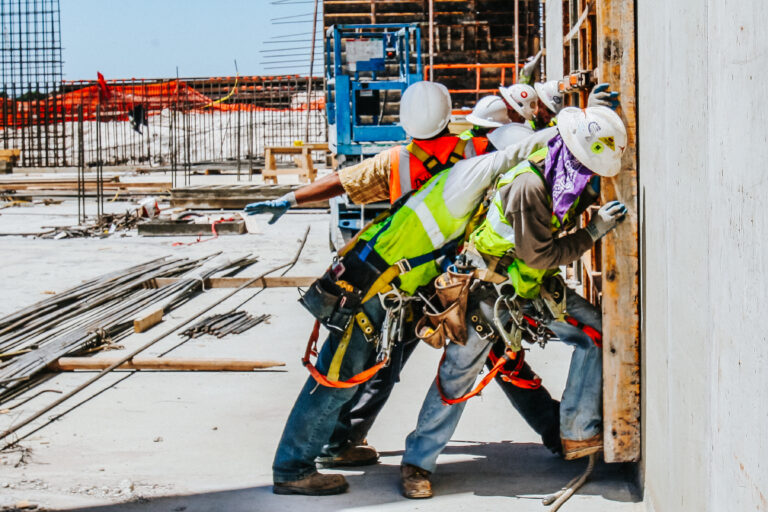Author: Lana Piskorowski
Austin, consistently the fastest-growing metro area for over a decade, responded to its surging population and the accompanying demand for resources by initiating the construction of Water Treatment Plant No. 4 in 2009. This 92-acre plant, later renamed the Berl L. Handcox Sr. Water Treatment Plant (Handcox WTP) in honor of Austin City Council’s first African American member, represents the city’s third major water treatment development. It follows the Davis and Ullrich Water Plants, which were built in 1954 and 1969, respectively. Designed to meet not just the residential water supply needs of a growing population but also to support critical water-dependent industries such as manufacturing, semiconductor production, and the oil and gas sector, Handcox WTP plays a vital role in sustaining Austin’s economic and residential development.
To undertake this ambitious project, Austin enlisted MWH for coordination and construction. This five-year, $508 million project significantly expanded the city’s water capacity, increasing raw water intake from Lake Travis from 50 million gallons per day (MGD) to an impressive 300 MGD.

A key feature of Handcox WTP is its water conveyance system. The plant includes a 9-foot diameter tunnel for raw water intake, stretching nearly a mile to the raw water pump station. Here, water is lifted over 450 feet by five 1500-hp vertical turbine pumps and then transported to the treatment plant via an 84-inch diameter, steel-lined tunnel. Following conventional water treatment processes, the finished water is then sent through the 7-foot diameter Jollyville Transmission Main (JTM) tunnel, covering nearly seven miles to the Jollyville Reservoir.
In managing Handcox WTP, MWH faced a complex array of challenges, as recalled by Joe Sesil, the Project Manager at the time. “From schedule and cost impacts, working with engineers on alternatives, we were part of the evaluation, assisting and providing cost information to help the City make critical decisions on options for the plant.” Despite these challenges, MWH’s strategic approach and adaptability were key in navigating through these uncertainties. The team prepared 14 GMPs (Guaranteed Maximum Prices), aligning the design closely with the budget, which allowed the City of Austin to make informed cost decisions and minimize the need for expensive redesigns.
The project’s division into smaller work packages catered specifically to local bidders, enhancing subcontractor coordination. Collaborating with three design firms, the preconstruction strategy led to over $75 million in proposed cost savings, with $30 million of these savings realized. Notably, modifications to the raw water intake foundation alone saved an estimated $2 million. Howard Lazarus, PE, Director of Public Works for the City of Austin, acknowledges the unique, symbiotic relationships that led to the project’s completion. “The partnership formed among the City, MWH, and the design team under a CMAR arrangement allowed challenges to be identified early and solutions developed without impact to the project scope.” This innovative approach earned MWH recognition from ENR with an award in the Water/Environment category and an Alliant Build America Award from the Associated General Contractors of America.
Situated within the Balcones Canyonlands National Wildlife Refuge, the construction of Handcox WTP was an exercise in balancing development with environmental stewardship. The refuge, known for protecting the nesting grounds of two endangered songbirds – the black-capped vireo and the golden-cheeked warbler – also provides habitat for six species of endangered cave-dwelling karst invertebrates. Sesil reflects on navigating this unique ecological landscape. “The site itself was a very environmentally sensitive area. We had to carefully work around the golden-cheeked warblers’ nesting period and preserve habitats for invertebrates. When we encountered an endangered species, we temporarily shut down the affected area and implemented proactive measures to ensure their protection and minimize the environmental impact of the project,” Sesil recalls.

Furthermore, in a concerted effort to prioritize sustainability, the MWH environmental team collaborated closely with the City of Austin to integrate Leadership in Energy and Environmental Design (LEED®) features into the design, construction, and operation of Handcox WTP. This commitment to environmental responsibility was recognized with two on-site buildings achieving prestigious LEED® certifications – a globally acknowledged standard for high-performance green buildings administered by the U.S. Green Building Council. The administration building was awarded LEED® Gold certification, denoting excellence in sustainable design, while the maintenance building attained LEED® Silver certification.
Handcox WTP reminds us that we can create large infrastructure projects that respect and enhance natural habitats and contribute positively to urban ecosystems. Sesil proudly reflects, “We had a really good, focused, hard-working, smart team…all were focused on doing a quality job and getting the job done right for the city of Austin.” Completed in 2014, Handcox WTP’s execution has since provided MWH with a blueprint for blending collaborative construction with environmental consciousness in subsequent projects.


